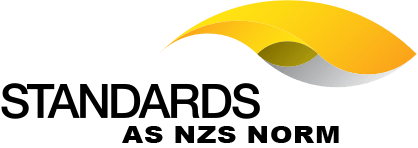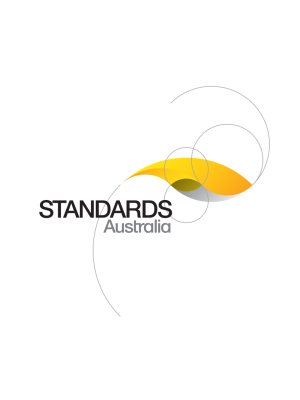🔍

Purchase the full subscription package now and enjoy a 40% discount, along with free updates for future editions.
AS ISO/IEC/IEEE 42020:2019
$296.44
Software, systems and enterprise — Architecture processes
The objective of this Standard is to establish a set of process descriptions for the governance and management of a collection of architectures and the architecting of entities. This document also establishes an enablement process description that provides support to these other architecture processes.
Table of contents
Header
About this publication
Preface
Foreword
0 Introduction
1 Scope
2 Normative references
3 Terms and definitions
4 Conformance
4.1 General
4.2 Approach to conformance
4.3 Full conformance cases
4.4 Tailored conformance
5 Process overview and application
5.1 General
5.2 Relationship of architecture to other processes and information elements
5.3 Architecture Governance and Management processes
5.4 Architecture Conceptualization, Evaluation and Elaboration processes
5.5 Architecture Enablement process
5.6 Relationship of architecture to design
5.7 Architecture adaptation
5.8 Process application
5.8.1 Criteria for processes
5.8.2 Description of processes
5.8.3 General characteristics of processes
5.8.4 Tailoring
6 Architecture Governance process
6.1 Purpose
6.2 Outcomes
6.3 Implementation
6.4 Activities and tasks
6.4.1 Prepare for and plan the architecture governance effort
6.4.2 Monitor, assess and control the architecture governance activities
6.4.3 Establish architecture collection objectives
6.4.4 Make architecture governance decisions
6.4.5 Monitor and assess compliance with governance directives and guidance
6.4.6 Review implementation of governance directives and guidance
6.5 Work products
7 Architecture Management process
7.1 Purpose
7.2 Outcomes
7.3 Implementation
7.4 Activities and tasks
7.4.1 Prepare for and plan the architecture management effort
7.4.2 Monitor, assess and control the architecture management activities
7.4.3 Develop architecture management approach
7.4.4 Perform management of the architecture collection
7.4.5 Monitor architecting effectiveness
7.4.6 Prepare for completion of the architecture management plan
7.5 Work products
8 Architecture Conceptualization process
8.1 Purpose
8.2 Outcomes
8.3 Implementation
8.4 Activities and tasks
8.4.1 Prepare for and plan the architecture conceptualization effort
8.4.2 Monitor, assess and control the architecture conceptualization activities
8.4.3 Characterize problem space
8.4.4 Establish architecture objectives and critical success criteria
8.4.5 Synthesize potential solution(s) in the solution space
8.4.6 Characterize solutions and the tradespace
8.4.7 Formulate candidate architecture(s)
8.4.8 Capture architecture concepts and properties
8.4.9 Relate the architecture to other architectures and to relevant affected entities
8.4.10 Coordinate use of conceptualized architecture by intended users
8.5 Work products
9 Architecture Evaluation process
9.1 Purpose
9.2 Outcomes
9.3 Implementation
9.4 Activities and tasks
9.4.1 Prepare for and plan the architecture evaluation effort
9.4.2 Monitor, assess and control the architecture evaluation activities
9.4.3 Determine evaluation objectives and criteria
9.4.4 Determine evaluation methods and integrate with evaluation objectives and criteria
9.4.5 Establish measurement techniques, methods and tools
9.4.6 Collect and review evaluation-related information
9.4.7 Analyze architecture concepts and properties and assess stakeholder value
9.4.8 Characterize architecture(s) based on assessment results
9.4.9 Formulate findings and recommendations
9.4.10 Capture and communicate evaluation results
9.5 Work products
10 Architecture Elaboration process
10.1 Purpose
10.2 Outcomes
10.3 Implementation
10.4 Activities and tasks
10.4.1 Prepare for and plan the architecture elaboration effort
10.4.2 Monitor, assess and control the architecture elaboration activities
10.4.3 Identify or develop architecture viewpoints
10.4.4 Develop models and views of the architecture(s)
10.4.5 Relate the architecture to other architectures and to relevant affected entities
10.4.6 Assess the architecture elaboration
10.4.7 Coordinate use of elaborated architecture by intended users
10.5 Work products
11 Architecture Enablement process
11.1 Purpose
11.2 Outcomes
11.3 Implementation
11.4 Activities and tasks
11.4.1 Prepare for and plan the architecture enablement effort
11.4.2 Monitor, assess and control the architecture enablement activities
11.4.3 Manage the architecture process enablers
11.4.4 Acquire, develop and establish enabling capabilities, services and resources
11.4.5 Deploy enabling capabilities, services and resources
11.4.6 Improve architecture enablement capabilities, services and resources
11.5 Work products
Annex A
A.1 General
A.2 Overview of architecture processes
A.2.1 Process usage
A.2.2 Introduction to process ordering
A.2.3 Process iteration
A.2.4 Process recursion
A.2.5 Life cycle stages
A.2.6 Process instantiation
A.2.7 Process reference model
A.3 Tailoring process steps
A.3.1 Purpose
A.3.2 Outcomes
A.3.3 Activities and tasks
Annex B
B.1 General
B.2 Guidelines for developing architecture process metrics
B.2.1 Metrics for governance effort
B.2.2 Metrics for management effort
B.2.3 Metrics for conceptualization effort
B.2.4 Metrics for evaluation effort
B.2.5 Metrics for elaboration effort
B.2.6 Metrics for enablement effort
Annex C
C.1 Relationship with system and software life cycle processes and stages
C.2 Relationship with enterprise processes
Annex D
Annex E
E.1 General
E.2 Architecture concepts
E.2.1 Metaphors
E.2.2 Architecture solution concepts
E.2.3 Architecture life concepts
E.2.4 Life cycle models
E.3 Architecting strategies and approaches
E.3.1 Architecting strategy
E.3.1.1 Introduction to architecting strategy
E.3.1.2 New development, (sometimes known as a “greenfield” approach)
E.3.1.3 New product in a product-line
E.3.1.4 Legacy evolution
E.3.1.5 Legacy revolution
E.3.1.6 Incremental start
E.3.1.7 Product-line start
E.3.2 Architecting approaches
E.3.2.1 General
E.3.2.2 Forward
E.3.2.3 Bottom-up
E.3.2.4 Middle-out
E.3.2.5 Outer-in
E.3.2.6 Reverse
E.3.2.7 Top-down
E.3.2.8 Zigzagging
E.3.3 Useful architecting mechanisms
E.3.3.1 General
E.3.3.2 Reference architectures
E.3.3.3 Architectural Patterns
E.3.3.4 Tactics
E.3.3.5 Heuristics
E.4 Architecture kinds, views and styles
E.4.1 Architecture kinds
E.4.1.1 General
E.4.1.2 Enterprise architecture
E.4.1.3 Overarching or strategic architecture
E.4.1.4 Reference architecture
E.4.1.5 Domain architecture
E.4.1.6 Baseline architecture
E.4.1.7 Target architecture
E.4.1.8 System architecture
E.4.1.9 Product line architecture
E.4.1.10 System of systems architecture
E.4.1.11 Product-service system architecture
E.4.1.12 Data architecture
E.4.2 Architecture views
E.4.2.1 General
E.4.2.2 Contextual (view of) architecture
E.4.2.3 Conceptual (view of) architecture
E.4.2.4 Functional (view of) architecture
E.4.2.5 Logical (view of) architecture
E.4.2.6 Physical (view of) architecture
E.4.2.7 Technical (view of) architecture
E.4.2.8 Organizational (view of) architecture
E.4.3 Architecture styles
E.4.3.1 General
E.4.3.2 Client server
E.4.3.3 Component-based architecture
E.4.3.4 Data-driven architecture
E.4.3.5 Event-driven architecture
E.4.3.6 Layered architecture
E.4.3.7 Object-oriented architecture
E.4.3.8 Publish-subscribe oriented architecture
E.4.3.9 Repository architecture
E.4.3.10 Service-oriented architecture (SOA)
E.5 Architecture motivation model
E.6 Quality
E.6.1 General
E.6.2 What is “Quality”?
E.6.3 Architecture quality attributes
E.6.4 Boehm’s quality model and ontology
E.6.5 The ISO/IEC 25000 family of standards on quality
E.6.5.1 >General
E.6.5.2 ISO/IEC 25000 Quality model framework
E.6.5.3 ISO/IEC 25010 System and software quality models
E.6.5.3.1 Quality in use model
E.6.5.3.2 System/software product quality model
E.6.5.4 ISO/IEC 25012 Data quality model
E.6.5.5 ISO/IEC 25020 System and software product quality measurement reference model
Annex F
F.1 Architecture enablement
F.2 Architecture process enabling resources
Annex G
G.1 Architecture governance
G.2 Architecture management
Annex H
H.1 General
H.2 TOGAF framework
H.2.1 Framework overview
H.2.2 Mapping to framework elements
H.2.3 Items in the TOGAF framework not addressed in this document
H.2.4 Items in this document not addressed in the TOGAF framework
H.3 PEAF framework
H.3.1 Framework overview
H.3.2 Mapping to framework elements
H.3.3 Items in the PEAF framework not addressed in this document
H.3.4 Items in this document not addressed in the PEAF framework
H.4 GERAM framework
H.4.1 GERAM framework overview
H.4.2 Mapping this document to GERAM framework elements
H.4.3 Items in GERAM not addressed in this document
H.4.4 Items in this document not addressed in GERAM
H.5 DoDAF framework
H.5.1 Framework overview
H.5.2 Mapping to framework elements
H.5.3 Items in the DoDAF framework not addressed in this document
H.5.4 Items in this document not addressed in the DoDAF framework
H.6 RM-ODP framework
H.6.1 Framework overview
H.6.2 Mapping to framework elements
H.6.3 Items in the RM-ODP Framework not addressed in this document
H.6.4 Items in this document not addressed in the RM-ODP Framework
Bibliography
IEEE notices and abstract
Cited references in this standard
Please select a variation to view its description.
| Published | 06/12/2019 |
|---|---|
| Pages | 117 |
Please select a variation to view its pdf.



